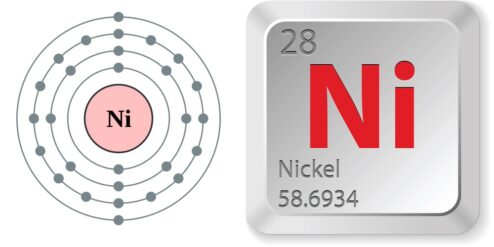Introduzione: Nickel allergy is a common type of contact dermatitis, an inflammatory skin condition caused by exposure to specific allergens. It is characterized by skin rashes and itching, which can be quite distressing. This article aims to provide a comprehensive overview of nickel allergy, its causes, symptoms, diagnosis, and management strategies, including topical treatments and medical interventions.
Understanding Nickel Allergy: Causes and Symptoms
Nickel allergy is an immune response to the metal nickel. It is triggered when the skin comes into contact with objects that contain nickel, such as jewelry, coins, and certain types of clothing. The immune system mistakenly identifies nickel as a harmful substance and triggers an allergic reaction. Symptoms of nickel allergy include redness, itching, swelling, skin rash, and blisters. These symptoms usually appear within 12 to 48 hours after exposure to nickel and can last for two to four weeks.
Nickel Allergy: The Role of Skin Contact
Skin contact plays a crucial role in nickel allergy. The more prolonged or frequent the skin contact with nickel, the more likely an allergic reaction will occur. This is why nickel allergy is more common in people who regularly wear jewelry or clothing that contains nickel. Furthermore, sweating can increase the risk of nickel allergy as it can enhance the release of nickel ions, which can penetrate the skin and trigger an allergic reaction.
Diagnosis of Nickel Allergy: Tests and Procedures
Nickel allergy is usually diagnosed through a patch test. This involves applying small patches coated with potential allergens, including nickel, to the skin. After 48 hours, the patches are removed, and the skin is examined for any allergic reactions. If the skin under the nickel patch is red and swollen, a nickel allergy is confirmed. Other tests, such as blood tests or skin biopsy, may also be used to rule out other skin conditions.
Managing Nickel Allergy: Avoidance Strategies
The most effective way to manage nickel allergy is to avoid contact with nickel. This can be achieved by choosing jewelry and clothing that are nickel-free, using nickel-free utensils and appliances, and avoiding foods that are high in nickel, such as chocolate, nuts, and certain types of fish. It’s also important to read product labels carefully as nickel can be found in unexpected places, such as cell phones, eyeglass frames, and even some cosmetics.
Topical Treatments for Nickel Allergy Relief
Topical treatments can be used to relieve the symptoms of nickel allergy. These include over-the-counter creams and ointments that contain corticosteroids, which can reduce inflammation and itching. Calamine lotion and cold compresses can also help soothe the skin. In addition, barrier creams can be applied before coming into contact with nickel to prevent an allergic reaction.
Medical Interventions for Severe Nickel Allergies
In severe cases of nickel allergy, medical interventions may be necessary. These can include prescription-strength corticosteroids, oral antihistamines to relieve itching, and in some cases, immunosuppressive drugs. If blisters are present, they may need to be drained by a healthcare professional. It’s important to seek medical advice if the symptoms of nickel allergy are severe or persist despite avoidance strategies and topical treatments.
Conclusioni: Nickel allergy is a common and often distressing condition. However, with a proper understanding of its causes and symptoms, effective avoidance strategies, and appropriate treatments, it can be successfully managed. It’s important to remember that everyone’s experience with nickel allergy is unique, and what works for one person may not work for another. Therefore, it’s crucial to work with a healthcare professional to develop a personalized management plan.
Per approfondire:
- American Academy of Dermatology: Nickel Allergy: This page provides a comprehensive overview of nickel allergy, including its causes, symptoms, diagnosis, and treatment.
- Mayo Clinic: Nickel Allergy: This article offers detailed information on nickel allergy, along with practical tips for avoiding nickel exposure.
- National Eczema Association: Nickel Allergy: This page focuses on the link between nickel allergy and eczema, a common skin condition.
- American Contact Dermatitis Society: Nickel: This page provides scientific information on nickel and its role in contact dermatitis.
- DermNet NZ: Nickel Allergy: This article provides a global perspective on nickel allergy, including its prevalence and management strategies.


